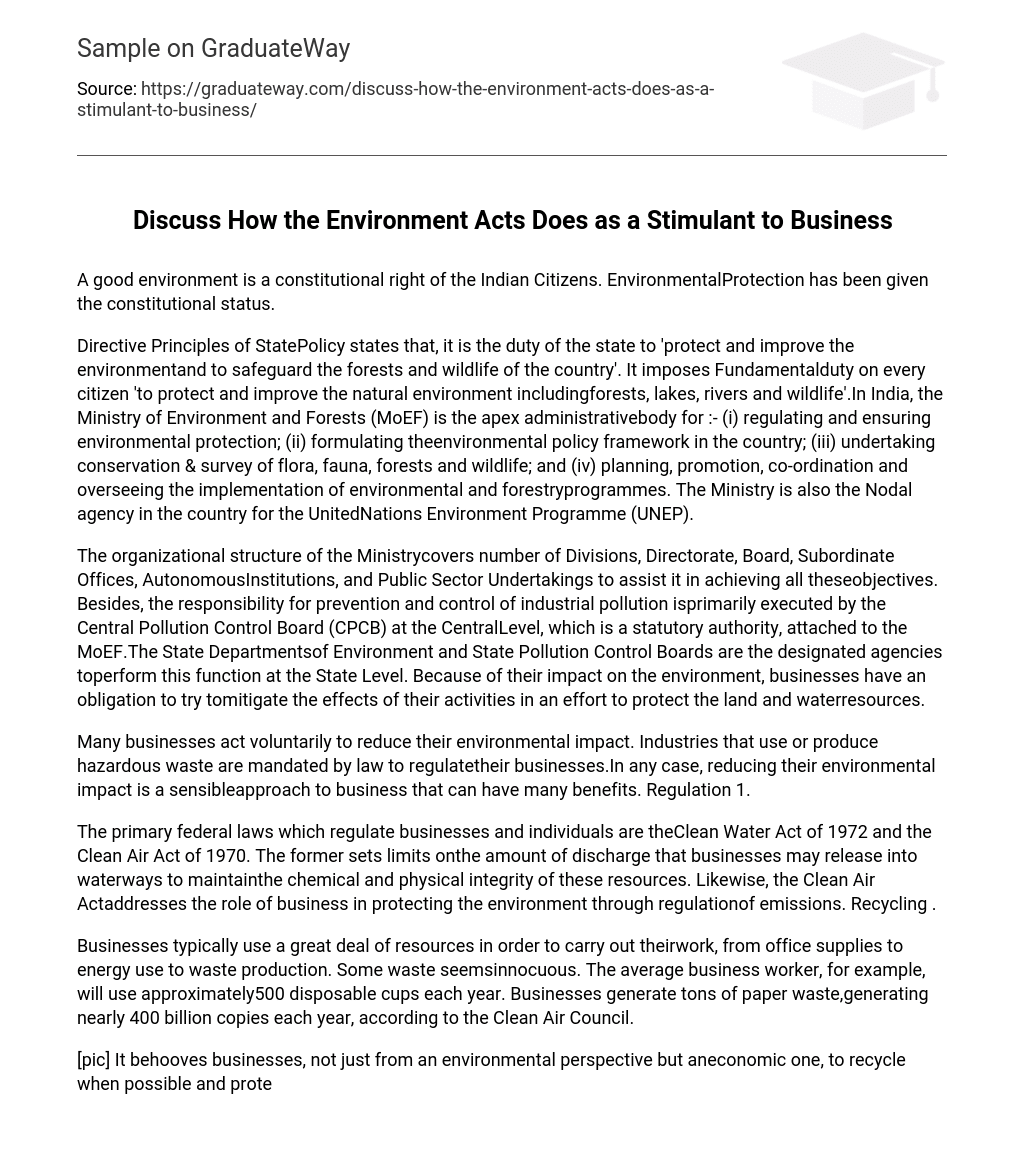A good environment is a constitutional right of the Indian Citizens. EnvironmentalProtection has been given the constitutional status.
Directive Principles of StatePolicy states that, it is the duty of the state to ‘protect and improve the environmentand to safeguard the forests and wildlife of the country’. It imposes Fundamentalduty on every citizen ‘to protect and improve the natural environment includingforests, lakes, rivers and wildlife’
The organizational structure of the Ministrycovers number of Divisions, Directorate, Board, Subordinate Offices, AutonomousInstitutions, and Public Sector Undertakings to assist it in achieving all theseobjectives. Besides, the responsibility for prevention and control of industrial pollution isprimarily executed by the Central Pollution Control Board (CPCB) at the CentralLevel, which is a statutory authority, attached to the MoEF.The State Departmentsof Environment and State Pollution Control Boards are the designated agencies toperform this function at the State Level. Because of their impact on the environment, businesses have an obligation to try tomitigate the effects of their activities in an effort to protect the land and waterresources.
Many businesses act voluntarily to reduce their environmental impact. Industries that use or produce hazardous waste are mandated by law to regulatetheir businesses.In any case, reducing their environmental impact is a sensibleapproach to business that can have many benefits.
The primary federal laws which regulate businesses and individuals are theClean Water Act of 1972 and the Clean Air Act of 1970. The former sets limits onthe amount of discharge that businesses may release into waterways to maintainthe chemical and physical integrity of these resources. Likewise, the Clean Air Actaddresses the role of business in protecting the environment through regulationof emissions. Recycling .
Businesses typically use a great deal of resources in order to carry out theirwork, from office supplies to energy use to waste production. Some waste seemsinnocuous. The average business worker, for example, will use approximately500 disposable cups each year. Businesses generate tons of paper waste,generating nearly 400 billion copies each year, according to the Clean Air Council.
It behooves businesses, not just from an environmental perspective but aneconomic one, to recycle when possible and protect the environment.In somestates, such as California, recycling is mandatory. Environmental Management System 3. An Environmental Management System (EMS) is a document developed bybusinesses in order to assess their environmental impact and improve theefficiency of their organization.
While not mandatory, the U. S. EnvironmentalProtection Agency (EPA) encourages businesses to evaluate their practices. Developing an EMS is a good business strategy because it reduces environmentalcosts from fines and other legal actions in the event of environmentalcontamination.
First and foremost, businesses benefit by protecting the environment throughcost savings. An efficiently run business that generates minimal waste savesmoney. Second, a business that is conscious of its role in the environmentcreates environmental awareness in its employees, providing additional benefits.
Finally, businesses which follow green practices portray a good message toconsumers who may be more likely to support a business that considers its role?.





